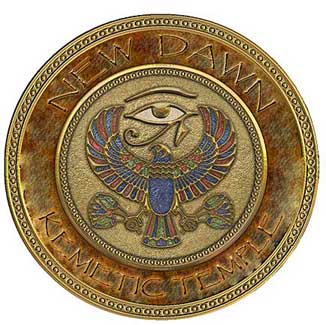|
|
|


Patron of: inner strength, especially that of women.
Appearance: a woman with the head of a lioness.
Description: Pakhet in all likelihood was a combination of Bast and Sekhmet. As her cult was centered in Middle Egypt, between the cult areas of Bast and Sekhmet, this may be the case. Her attributes of both ferocity and femininity further lend strength to this conclusion.
Worship: Middle Egypt, primary temple near Beni Hassan.

Panebtawy was a youthful god who is the divine child of Haroeris and Tasenetnofret in the western sanctuary of Kom-Ombo temple. As "the lord of the Two Lands" he represents the idea of the pharaoh as son of the god Haroeris, hence the legitimate ruler of Egypt

Peteese and Pihor were two deified human brothers, sons of Kuper, who appear to have lived in the vicinity of Dendur in Lower Nubia during the 26th Dynasty. While the reason for their elevation to minor gods is not known, they may have met their death in the Nile river, a fate having connotations to Osiris. However, and significantly, Roman policy towards Egyptian religion was established when Augustus built a modest temple in honor of the brothers on the west bank at Dendur. In some instances, the reliefs show Peteese and Pihor as "upstart" deities making offerings to their superior, the goddess Isis.

Patron of: creation, craftsmen, artisans.
Appearance: A man with a punt beard, wrapped up like a mummy, but with his hands free which grip a great staff made up of the symbols for life, stability, and power. Sometimes he wears a skullcap crown and stands on the hieroglyph for Maat.
Description: In the Memphite theology, Ptah is the primal creator, the first of all the gods, creator of the world and all that is in it. He is not created, but simply is. In some stories he is the personification of the primal matter, Ta-Tenen, which rose out of Nun, the fundamental seas. His wife is said to be Bast (or Sakhmet) and their children are Nefertem, Mahes, and Imhotep.
Ptah's importance may be discerned when one learns that "Egypt" is a Greek corruption of the phrase "Het-Ka-Ptah," or "House of the Spirit of Ptah."
Worship: Worshipped throughout all of Egypt, his cult centers were Memphis and Heliopolis.
Variants:
Ptah-Seker-Osiris
A composite funerary god worshipped during the Middle Kingdom period. In this
form he represents the three aspects of the universe: creation, stability, and
death.
